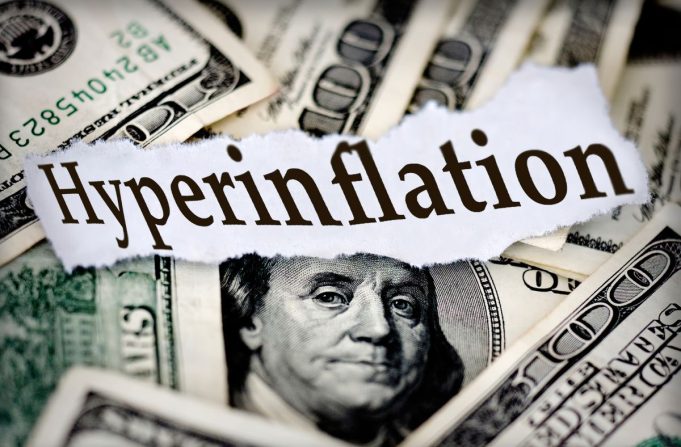Hyperinflation is a worrisome phenomenon characterized by a rapid and uncontrolled increase in the general price level of goods and services over a sustained period of time. It has a number of serious implications, such as reducing the purchasing power of currency, and even potentially leading to the collapse of an economy. It’s not a new phenomenon, with some of the most famous episodes of hyperinflation having occurred in Germany after World War I, Venezuela in the 21st century, and Zimbabwe in the early 2000s.
In Germany after World War I, hyperinflation was caused largely by the suspension of the gold standard, and the consequent devaluation of the German mark in relation to other currencies. This was compounded by the reparations the country had to pay to the Allies, which required them to secure foreign currency by printing more and more paper money.
This uncontrolled increase in the money supply led to unimaginable increases in the price level, where prices would double within a day, and the purchasing power of the German mark decreased to such an unprecedented degree that people began burning their paper money for heat.
Venezuela and Zimbabwe were two countries hit by hyperinflation in the 21st century. In Venezuela, the crisis was steeped in politics, with many observers blaming the government for not taking decisive and urgent action to put curbs on the depreciation of the bolivar. As a result, inflation rose from 69% in 2014 to 181% in 2015, and 800% in 2016. By early 2019, inflation had reached over 2.6 million percent.
In Zimbabwe, the trigger was thought to be the introduction of the ESAP (Economic Structural Adjustment Programme) in 1991, as well as the disastrous and chaotic land reforms. Inflation rates in Zimbabwe touched 231,150,888% in July 2008, and, according to Professor Steve H. Hanke’s calculations, reached a peak of 89.7 sextillion percent in November 2008. This was the second worst episode of hyperinflation in history, coming in second only to Hungary between 1945 and 1946.
Hyperinflation has a number of implications, not least of which the erosion of people’s savings and the collapse of an economy. There are those that are looking for alternatives to the traditional system, which is where cryptocurrency has come into play. Cryptocurrencies, such as Bitcoin and Ethereum, cannot be manipulated by government or financial institutions, as they are based on decentralized systems. As a result, countries dealing with hyperinflation, such as Venezuela and Zimbabwe, are now turning to cryptocurrency as a way of safeguarding their finances.
In addition, there is also the possibility of governments introducing a government-backed cryptocurrency as an alternative to the traditional fiat currency system. The central bank of Sweden has already taken steps in this direction, and is being closely watched by other central banks.
Hyperinflation remains a menacing problem in the world today. It has the power to cause serious harm to an economy, and its consequences can be catastrophic. It is encouraging to see that countries experiencing these episodes are looking to alternative solutions, such as cryptocurrency, to potentially avoid the worst of it.













